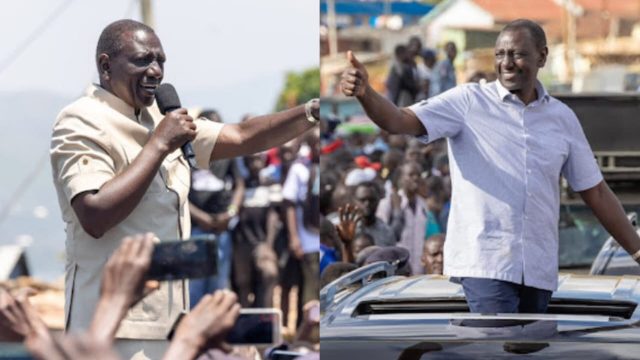During his four-day development tour of the Nyanza region, President William Ruto made several key promises that aim to address the pressing needs of the local communities.
This tour marked a significant engagement with a region that has historically leaned towards opposition politics, and Ruto’s pledges reflect a commitment to inclusivity and development. READ FULL STORY
Ruto’s tour not only focused on development projects aimed at stimulating economic growth but also sought to improve infrastructure in a region traditionally loyal to opposition leader Raila Odinga.
His promises indicate a potential political realignment and a commitment to inclusive governance that prioritizes the needs of all Kenyans, regardless of their political affiliations.
Infrastructure development
One of the cornerstone promises made by Ruto during his tour was the commitment to allocate more funds for the completion of several stalled infrastructure projects in the region.
He specifically pledged Ksh 1.5 billion to revive the Tuua Irrigation Scheme in Migori County, which is expected to significantly enhance agricultural productivity and food security in the area.
Additionally, Ruto launched the construction of various roads in Migori County, emphasizing the importance of improved transport networks for economic connectivity.
Furthermore, he committed Ksh 1.6 billion for Last Mile electricity connectivity, which includes the commissioning of the Kamshubu Electrification Project in Suna East, Migori.
This initiative aims to ensure that more households have access to reliable electricity, thereby facilitating better living standards and economic activities.
Making Homabay a city
Notably, Ruto promised to elevate Homa Bay from a town to city status.
He highlighted that Ksh 450 million has been allocated for improving water access, a crucial step towards achieving this goal.
Ruto emphasized the need for Homa Bay to cease being merely a town, stating, “We want this Homa Bay to stop being just a town. This Homa Bay, we want to plan for it to become a city”.
However, no specific timeline was provided for this transformation.
For Homa Bay to attain city status, it must meet criteria such as a minimum population of 250,000, effective service delivery, and well-developed infrastructure, along with Senate approval.
Education and teachers
In the realm of education, Ruto addressed the ongoing challenges facing teachers and the education sector as a whole.
He pledged to ensure that teachers’ demands are met, acknowledging the critical role they play in shaping the future of the nation.
Ruto said the government will release Ksh 13 billion to pay teachers’ salary arrears in the next two days.
The allocation will fulfil the terms of the Collective Bargain Agreement (CBA) that the government signed with the Kenya National Union of Teachers (Knut) and the Kenya Union of Post-Primary Education Teachers (Kuppet).
“At the end of this month, all your dues will be paid so that you can continue teaching our children,” he said.
Economic transformation
Ruto highlighted the pivotal role that the Nyanza region will play in advancing the Bottom-Up Economic Transformation Agenda, which seeks to uplift the lives of ordinary citizens through targeted economic initiatives.
He emphasized that the government is investing in various sectors, including irrigation, which is crucial for enhancing agricultural output.
Additionally, Ruto announced plans to revamp and build ports and ten landing sites, which are expected to improve trade and transportation in the region significantly.
The revival of sugar companies was also mentioned as part of the government’s strategy to stimulate economic growth and create job opportunities for the local population.
Completion of handshake projects
Throughout his tour, locals expressed their concerns regarding the fate of the ‘handshake projects’ that were initiated by former President Uhuru Kenyatta and Raila.
Many of these projects have either stalled or remain incomplete, leaving communities wondering about their future.
Ruto was urged to provide answers and clarity on these initiatives, as residents are eager to see tangible benefits from past agreements.
Addressing these concerns is crucial for building trust and ensuring that the promises made during his visit translate into real, impactful changes for the people of Nyanza.







